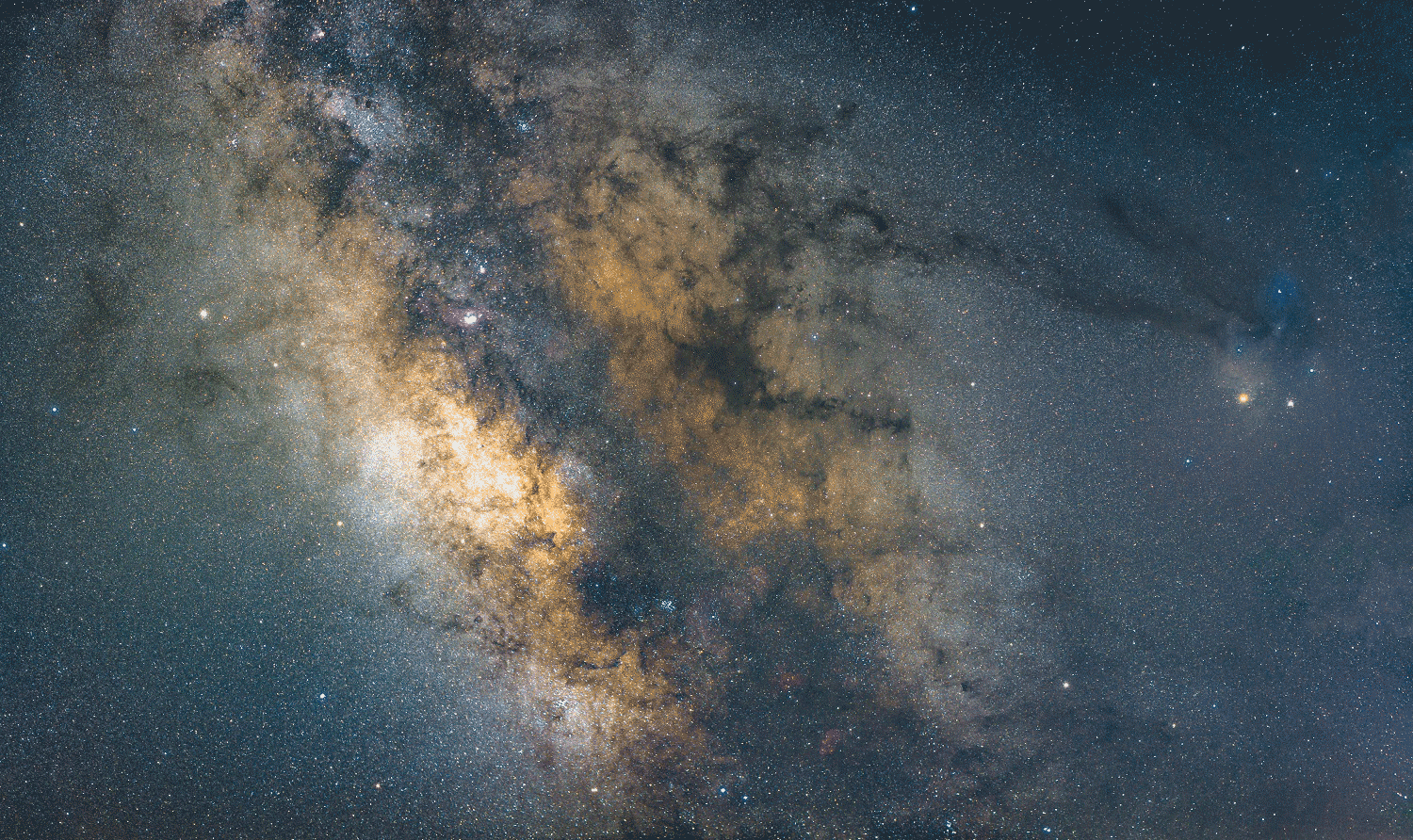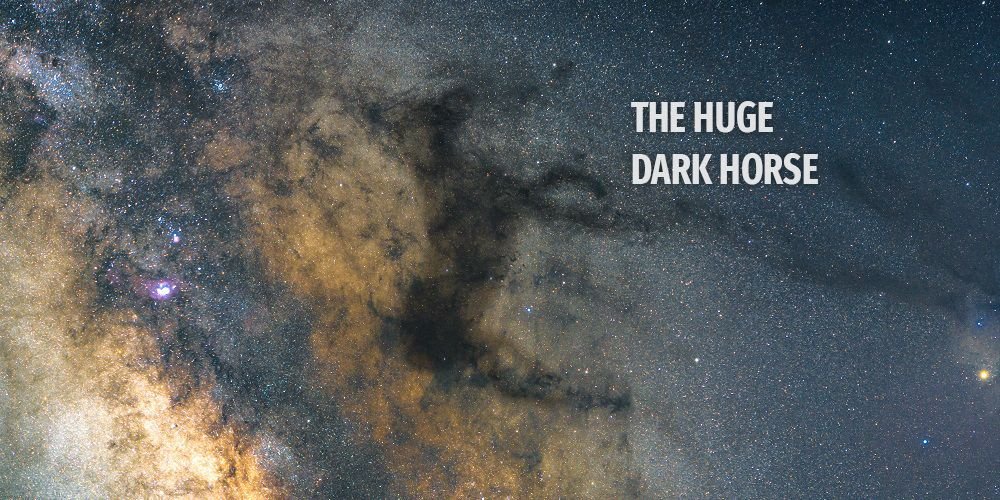Hey guys, welcome back for another journey! Today is not a great day for me: so much to do. I have too many deadlines approaching and, if that's not enough, last night I left my phone in the car of a girl I will see in a few days. But I should not care... it's Friday! But ... why am I talking about this? Let's talk about serious things... let's talk about the center of the Milky Way, our home.
Our Milky Way is huge: 100,000 light years! Yes. Light needs 100,000 years to travel along the diameter (Milky Way looks like a disk from above). It is made up of billions of stars. Inside of it there is everything you can imagine: emission nebulae, reflection nebulae, dark nebulae, stars, millions of other probably uninhabited (?) planets and much more. All these objects (including our beloved solar system) rotate together around the so-called galactic center [click to enlarge].
This portion of the sky, the richest ever, is right in the galactic center of our Milky Way. The picture you see is a combination of 4 shots captured with a simple 50mm lens and therefore includes a very big portion of the sky.
On the right you can see a big yellow/orange star. That is Antares in Scorpio. This star resides in the Antares Region (astronomers are not known for the great fantasy) near the Rho Ophiuchi Region (I talked about this beautiful part of the Milky Way in my first article ).
Thanks to the very large FOV (field of view) of the lens I managed to get more than one constellation into one picture:

Some constellations
And there are dozens of objects usually observed (and photographed) by amateur astronomers:

A lot of deep sky objects of the following catalogues: Messier, Barnard, New General Catalogue
Brightest areas of the photo are the richest of stars. It's like looking at our city center from the road that takes us to the suburbs. Darker areas are dark nebulae instead and are like smog or clouds in our city. These clouds of intergalactic material are so dense that light can't pass through and reach us. These clouds one day will collapse on themselves giving rise to new stars. Red and purple areas are emission nebulae emitting in the red spectrum (H-alpha line 656,3 nm).
This dark nebula below is one of the largest dark nebulae, the Huge Dark Horse Nebula. Can you find it? I gave you a small hint...

The Huge Dark Horse
And this one is one of my favorites dark nebulae, the Snake Nebula:

The Snake Nebula (B72)
There are many other things to say. If you want, we can talk about it in the next articles. So for today the trip ends here... I have too many things to do and a phone to recover (damn!). See you soon. Clear skies guys!
And remember: if you need help with astro/photography or if you want to talk about equipment/processing just comment below ;) Bye!

For the most curious, I've used a Canon EOS 60D (unmodded) and a Canon 50mm 1.8 STM on an HEQ5 unguided mount. Photos acquired with EOS Utility. Calibration and stacking made with Deep Sky Stacker and post-processing with Photoshop.
50mm - f/3.2 - ISO800
Light Frames: 4x10x 120''
Dark Frames: 15x 120''
Alessio Vaccaro
Follow @ilvacca and upvote if you want more contents like this one. Thank you


